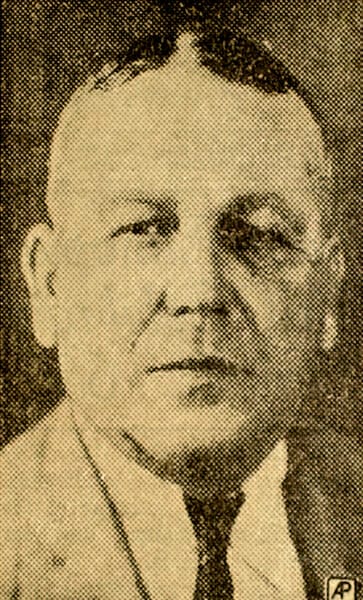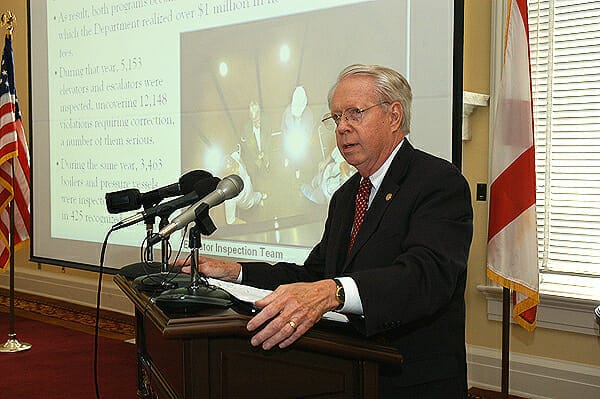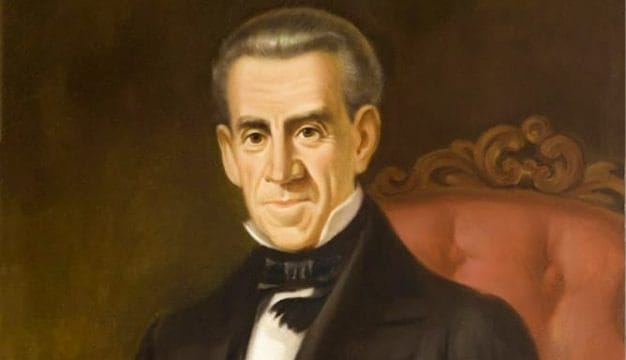Alabama Department of Labor
 Birmingham Coal Miners, 1937
The Alabama Department of Labor was created in 1935 amid worker unrest during the Great Depression. It was established to help solve labor disputes and administer laws regulating working hours, working conditions, and child labor. It was later tasked with conducting safety inspections on boilers and elevators and surveys relating to workplace illness, injuries, and fatalities. Gov. Bibb Graves established the department during his second administration to mediate labor problems that were then running rampant. Labor disputes in Alabama coal mines resulted in several strikes that had a crippling effect on the state economy and caused major work stoppages in 1917, 1920-21, and 1933-34. Graves, a former Montgomery lawyer who was elected with union backing, also created the Alabama State Employment Service to handle unemployment problems and ended the convict-leasing system. Between 1930 and 1940, nonfarm employment in Alabama had fallen by 15 percent, the worst rate of any southern state. The diminishing job market furthered labor unrest.
Birmingham Coal Miners, 1937
The Alabama Department of Labor was created in 1935 amid worker unrest during the Great Depression. It was established to help solve labor disputes and administer laws regulating working hours, working conditions, and child labor. It was later tasked with conducting safety inspections on boilers and elevators and surveys relating to workplace illness, injuries, and fatalities. Gov. Bibb Graves established the department during his second administration to mediate labor problems that were then running rampant. Labor disputes in Alabama coal mines resulted in several strikes that had a crippling effect on the state economy and caused major work stoppages in 1917, 1920-21, and 1933-34. Graves, a former Montgomery lawyer who was elected with union backing, also created the Alabama State Employment Service to handle unemployment problems and ended the convict-leasing system. Between 1930 and 1940, nonfarm employment in Alabama had fallen by 15 percent, the worst rate of any southern state. The diminishing job market furthered labor unrest.
The impetus for the creation of the department was a series of strikes by mining labor, especially the 1933 coal strike organized by the Congress of Industrial Organizations (CIO), during which then-governor Benjamin Meek Miller called out the National Guard to suppress the protests. By the spring of 1934, 90 percent of Alabama coal miners were unionized. Miller demanded that unions notify state labor officials prior to any strike decisions. The coal strikes were followed by similar walkouts in the textile industry. Also in 1934, some 15,000 Alabama textile workers struck at 30 mills across the state. The walkouts soon expanded to a nationwide strike.
 Robert R. Moore
Acting on recommendations made in a report by the Brookings Institute, written at Miller’s request three years earlier, the Alabama legislature passed the Taylor-Riddle Act at newly elected Gov. Graves’s request, creating the state labor department. The new legislation charged the agency with monitoring work hours and working conditions, supervising child labor, and engaging in voluntary dispute mediation and resolution. Although the department had no powers to force parties to the bargaining table, it could avert and settle strikes through mediation efforts.
Robert R. Moore
Acting on recommendations made in a report by the Brookings Institute, written at Miller’s request three years earlier, the Alabama legislature passed the Taylor-Riddle Act at newly elected Gov. Graves’s request, creating the state labor department. The new legislation charged the agency with monitoring work hours and working conditions, supervising child labor, and engaging in voluntary dispute mediation and resolution. Although the department had no powers to force parties to the bargaining table, it could avert and settle strikes through mediation efforts.
Graves named Robert R. Moore, president of the Alabama Federation of Labor in Birmingham, as its first commissioner, and offices were opened on the second floor of the First White House of the Confederacy across from the Capitol. The governor considered the labor department bill, sponsored by Rep. William. C. Taylor of Mobile, to be one of the most important acts of his tenure and furthered a campaign promise he made to promote human welfare. In its first year, the department received an appropriation of $20,000. A supporter of Pres. Franklin Roosevelt’s New Deal, Graves’s reform efforts also expanded education and health facilities, increased teachers’ salaries and veterans’ benefits, and funded highway and docks construction.
When Frank Dixon became governor in 1939, he consolidated the Labor Department into the new State Department of Industrial Relations, under the Industrial Relations Act. It was then restored as an independent agency in 1943 under Gov. Chauncey Sparks with the passage of the Bradford Act. Not all labor laws were immediately transferred back from the Industrial Relations Department, however. Those relating to child labor and mine inspections were retained by Industrial Relations. Child labor enforcement was eventually returned in January 2000 through an executive order signed by Gov. Don Siegelman. Sparks appointed William Emmett Brooks, publisher of the Brewton Standard, director of the newly constituted Alabama Department of Labor and increased the agency’s annual budget to $40,000.
 Child Textile Mill Workers in Mobile
The Bradford Act charged the labor office with handling wage claims and promoting workplace harmony. It also tasked it again with promoting the voluntary and peaceful resolution of labor disputes. Staunchly opposed by the labor movement, the legislation was considered by union leaders to be an attack on the advances they had made in the 1930s. Unions quickly sought court action to overturn the act, challenging sections allowing the department to regulate the activities and affairs of labor organizations by requiring them to file constitutions and by-laws, financial statements, and annual reports of any labor organization with 25 or more members. The law also required unions to submit a $2.00 annual filing fee. Further, the department began to conduct union representation elections. In addition, the law included an “open shop” provision that allowed workers to be employed without having to join a union, banned picket lines, and required unions to notify the Labor Department of any intention to strike. Parts of the law were later struck down in the courts.
Child Textile Mill Workers in Mobile
The Bradford Act charged the labor office with handling wage claims and promoting workplace harmony. It also tasked it again with promoting the voluntary and peaceful resolution of labor disputes. Staunchly opposed by the labor movement, the legislation was considered by union leaders to be an attack on the advances they had made in the 1930s. Unions quickly sought court action to overturn the act, challenging sections allowing the department to regulate the activities and affairs of labor organizations by requiring them to file constitutions and by-laws, financial statements, and annual reports of any labor organization with 25 or more members. The law also required unions to submit a $2.00 annual filing fee. Further, the department began to conduct union representation elections. In addition, the law included an “open shop” provision that allowed workers to be employed without having to join a union, banned picket lines, and required unions to notify the Labor Department of any intention to strike. Parts of the law were later struck down in the courts.
The massive growth of industry during World War II resulted in numerous labor problems and at its conclusion, the dismantling of emergency war-time programs such as rationing and tax credits and the banning of strikes. In 1969, Alabama, like other states, adopted “little Davis-Bacon Acts,” which were variants of the federal Davis-Bacon Act of 1931 that required prevailing wages be paid on contracts involving federal money. The state bills expanded coverage to include contracts using state money. This legislation in Alabama was repealed in 1980.
 James R. Bennett
In 1972, through an agreement with the U.S. Department of Labor, the Alabama Labor Department began publishing job-related illness, injury, and fatality reports through a series of federal surveys used by the Occupational Health and Safety Administration to revise and draft new programs. Since 1985, in cooperation with the Federal Mediation and Conciliation Service, the department has sponsored the annual Governor’s Labor/Management Conference to maintain open lines of communications between Alabama companies and their organized work forces. The first conference, which was held at Lake Guntersville, has grown into one of the largest meetings of its type in the South. In 2000, the legislature added to the Labor Department’s responsibilities a mandate to conduct safety inspections on the state’s estimated 20,000 nonindustrial boilers and pressure vessels and in 2003 voted to extend safety inspections to over 10,000 elevators and escalators.
James R. Bennett
In 1972, through an agreement with the U.S. Department of Labor, the Alabama Labor Department began publishing job-related illness, injury, and fatality reports through a series of federal surveys used by the Occupational Health and Safety Administration to revise and draft new programs. Since 1985, in cooperation with the Federal Mediation and Conciliation Service, the department has sponsored the annual Governor’s Labor/Management Conference to maintain open lines of communications between Alabama companies and their organized work forces. The first conference, which was held at Lake Guntersville, has grown into one of the largest meetings of its type in the South. In 2000, the legislature added to the Labor Department’s responsibilities a mandate to conduct safety inspections on the state’s estimated 20,000 nonindustrial boilers and pressure vessels and in 2003 voted to extend safety inspections to over 10,000 elevators and escalators.
In 2007-08, the department’s budget totaled $1.7 million, with state appropriations being supplemented by self-generated inspection fees and federal funds. In 2008, the Labor Department had 18 employees responsible to the commissioner and three department heads. Since its inception, the department has had 19 directors in the cabinet-level position. The title “director” was changed to “commissioner” in the 1970s.
Additional Resources
Acts of Alabama, Act No. 433, 1935 Regular Session, 911-913.
Acts of Alabama, Act No. 161, 1939 Regular Session, 23.
Acts of Alabama, Act No. 298, 1943 Regular Session, 252, 298.
Acts of Alabama, Act No. 315, 2000 Regular Session, 488-501.
Acts of Alabama, Act No. 349, 2003 Regular Session, 903-919.
Annual Reports of the Alabama Department of Labor, 1953-2007.
Pendleton, Debbie. “New Deal Labor Policy and Alabama Textile Unionism.” Master’s thesis, University of Alabama, Tuscaloosa, 1988.
Executive Order No. 13, Gov. Don Siegelman, January 4, 2000.
Interagency Agreement. Alabama Department of Industrial Relations and the Alabama Department of Labor, January 10, 2000.
Norrell, Robert J. “Labor at the Ballot Box: Alabama Politics from the New Deal to the Dixiecrat Movement.” Journal of Southern History 57 (May 1991): 221.
Report on a Survey of the Organization and Administration of the State and County Governments of Alabama. Submitted to Gov. B. M. Miller, Brookings Institute, Institute for Government Research, Washington, D.C., 1932.



